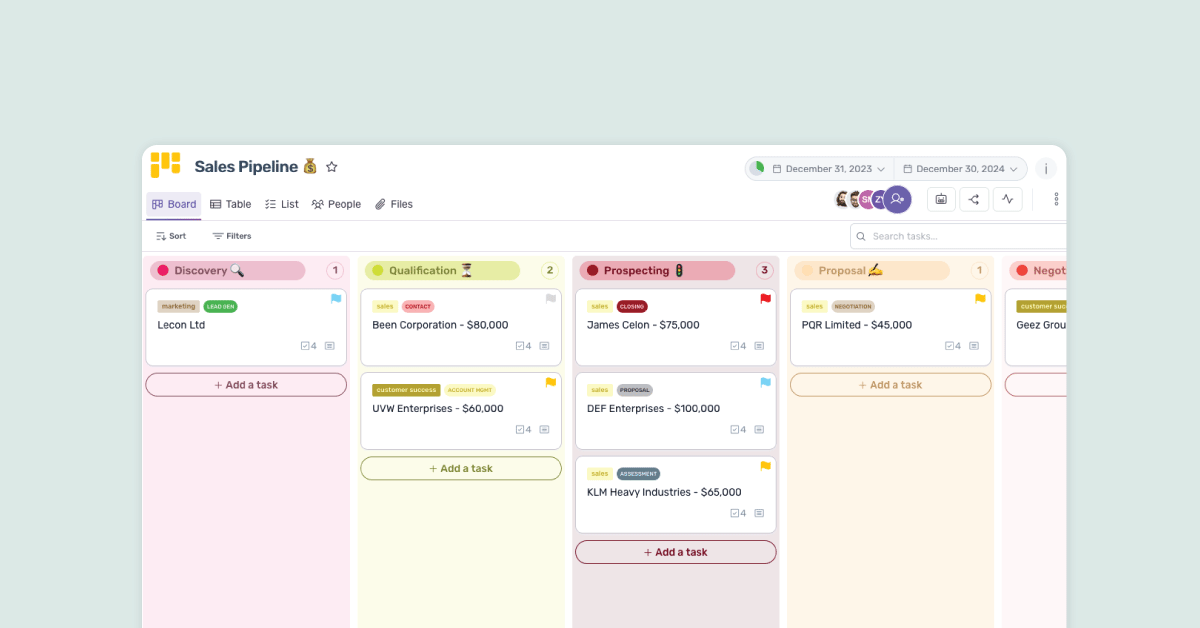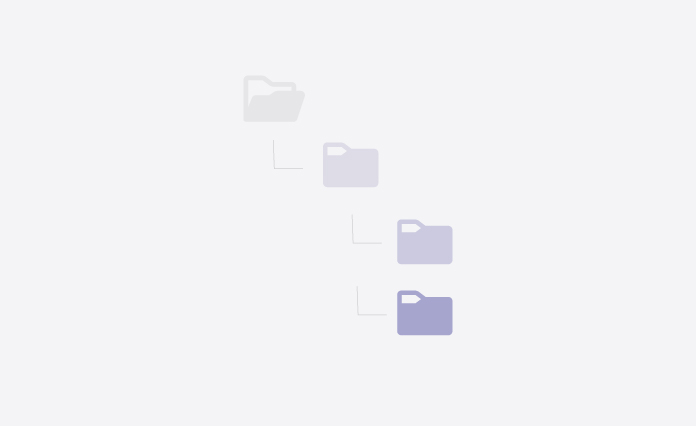In today’s competitive business landscape, understanding and embracing customer feedback has become essential for success. A well-designed customer feedback tracking template can serve as a valuable tool in this process, allowing businesses to harness the power of feedback to drive growth and improve their strategies. By effectively implementing and analyzing the data from such a template, businesses can gain valuable insights and take action to better meet their customers’ needs. In this article, we will explore the importance of customer feedback and how to create and utilize the ultimate customer feedback tracking template.

Understanding the Importance of Customer Feedback
Customer feedback plays a pivotal role in business growth. It provides invaluable insights into customers’ experiences and perceptions, helping businesses identify areas for improvement and make informed decisions. By actively encouraging and listening to customer feedback, businesses demonstrate their commitment to customer satisfaction and build stronger relationships. Additionally, responding to feedback helps maintain transparency and fosters trust, as customers feel heard and valued by the brand.
The Role of Customer Feedback in Business Growth
Customer feedback serves as a catalyst for business growth. By understanding customer preferences, pain points, and expectations, businesses can tailor their products, services, and strategies accordingly. This personalized approach enables businesses to enhance customer satisfaction, loyalty, and retention. Furthermore, feedback can uncover untapped market opportunities, allowing businesses to stay ahead of the competition and continuously innovate.
For instance, a restaurant that actively seeks customer feedback may discover that customers often request a more extensive vegetarian menu. By addressing this concern and introducing new vegetarian options, the restaurant not only meets customer expectations but also attracts a wider audience, ultimately boosting its revenue and reputation.
How Feedback Shapes Your Business Strategies
Customer feedback acts as a guiding compass for shaping business strategies. It provides insights into customers’ changing needs, preferences, and expectations, enabling businesses to adapt and evolve. By analyzing patterns and trends in feedback data, businesses can identify common pain points or recurring suggestions, helping them prioritize areas for improvement. This information not only enhances the customer experience but also optimizes internal processes and resource allocation.

Moreover, feedback can shed light on emerging market trends, helping businesses stay ahead of industry developments. For example, an e-commerce platform that analyzes customer feedback may discover that consumers now prefer faster delivery options. Armed with this knowledge, the platform can revise its logistics and delivery strategies to meet this demand, gaining a competitive edge.
Furthermore, customer feedback can also provide valuable insights into the effectiveness of marketing campaigns. By analyzing feedback related to promotional activities, businesses can gauge the impact of their marketing efforts and make data-driven decisions to optimize their strategies. This allows businesses to allocate their marketing budget more effectively, ensuring maximum return on investment.
In addition, customer feedback can help businesses identify and address potential issues before they escalate. By proactively seeking feedback and addressing any concerns or complaints, businesses can prevent negative experiences from spreading and damaging their reputation. This proactive approach not only improves customer satisfaction but also helps businesses build a positive brand image and foster customer loyalty.
Components of an Effective Customer Feedback Tracking Template
An effective customer feedback tracking template should incorporate various key elements to maximize its usefulness. By customizing it to address specific business needs, companies can streamline their feedback collection process and derive actionable insights. Let’s explore the essential components that should be included in your template.
Key Elements to Include in Your Template
1. Clear and Specific Questions: The template should contain well-crafted questions that elicit specific feedback related to your business objectives. Avoid vague or leading questions, as they may result in misleading or inadequate responses.
2. Rating Scales: Incorporating rating scales allows customers to express their satisfaction levels or preferences on a predefined scale. This quantitative data provides a clear overview and simplifies data analysis.
3. Open-Ended Questions: In addition to predefined options, the template should also include open-ended questions to capture qualitative feedback. This allows customers to provide detailed insights, suggestions, or elaborate on their experiences.
4. Contact Information: Including a section for customers to provide their contact information showcases your commitment to follow up on their feedback. It also allows for further clarification or resolution if needed.
Prioritizing Different Types of Feedback
Customer feedback can vary in terms of its impact and relevance to your business. It is crucial to prioritize different types of feedback to focus your resources effectively and address the most critical issues. By categorizing feedback into segments such as product-related, service-related, or operational, you can identify which areas require immediate attention and allocate resources accordingly. Prioritizing feedback ensures that you address the most pressing concerns first, making your efforts impactful and meaningful.
5. Analyzing Trends: Another important component to consider is analyzing trends within the feedback data. By identifying recurring themes or patterns, you can gain valuable insights into the overall sentiment of your customers. This analysis can help you identify areas of improvement or potential opportunities for innovation.
6. Benchmarking: To gauge the effectiveness of your customer feedback tracking template, it is beneficial to benchmark your performance against industry standards or competitors. This comparison allows you to assess your strengths and weaknesses and identify areas where you can excel or catch up. Benchmarking can provide valuable insights into how your feedback collection process compares to others in your industry.
By expanding your customer feedback tracking template to include these additional components, you can enhance the depth and breadth of the insights you gather. Remember, an effective template is not static but evolves with your business needs and customer expectations. Continuously refining and improving your feedback collection process will help you stay ahead of the competition and deliver exceptional customer experiences.
Implementing Your Customer Feedback Tracking Template
Once you have created a comprehensive customer feedback tracking template, it is important to seamlessly integrate it into your business operations. Follow these steps to ensure a smooth implementation process:
Steps to Integrate the Template into Your Business
1. Train Your Team: Educate your team on the purpose and significance of the feedback tracking template. Provide clear instructions on how to administer the template to customers and how to collect and record the feedback.
Implementing a new system within your business requires proper training and guidance for your team. Take the time to explain the importance of the customer feedback tracking template and how it can benefit the organization as a whole. By providing clear instructions on how to administer the template to customers and how to collect and record their feedback, you ensure that your team is equipped with the necessary knowledge to effectively implement the template.
2. Choose the Right Channels: Determine the most effective channels for collecting feedback. These can include online surveys, email campaigns, or in-person interactions. Tailor your approach to align with your target audience and their preferred communication channels.
When it comes to collecting customer feedback, it is crucial to choose the right channels. Consider the preferences of your target audience and select the channels that they are most likely to engage with. This could be through online surveys for tech-savvy customers, email campaigns for those who prefer a more personalized approach, or even in-person interactions for a more personal touch. By tailoring your approach to align with your audience’s preferred communication channels, you increase the likelihood of receiving valuable feedback.
3. Promote and Incentivize Participation: Encourage customers to provide feedback by offering incentives, such as discounts, exclusive access, or chances to win prizes. Promote the feedback process across various touchpoints, including your website, social media platforms, and in-store communications.
Getting customers to actively participate in providing feedback can be a challenge. To overcome this, consider offering incentives that motivate them to share their thoughts. Discounts, exclusive access to new products or services, or even the chance to win exciting prizes can be powerful motivators. Additionally, make sure to promote the feedback process across various touchpoints, such as your website, social media platforms, and in-store communications. By creating awareness and highlighting the benefits of providing feedback, you increase the likelihood of receiving valuable insights.
4. Regularly Review and Analyze Feedback: Establish a dedicated team or individual responsible for regularly reviewing and analyzing the feedback data. Set up a system to consolidate and analyze the data, identifying trends and patterns that can inform decision-making.
Collecting feedback is only the first step; the real value lies in analyzing the data. Establish a dedicated team or assign an individual responsible for regularly reviewing and analyzing the feedback data. By setting up a system to consolidate and analyze the data, you can identify trends and patterns that provide valuable insights. These insights can then inform decision-making processes, allowing you to make data-driven improvements to your products, services, or overall customer experience.
5. Act on Insights: Turning feedback into actionable insights is essential for driving improvement. Use the feedback data to identify areas for enhancement and develop an action plan to address customer concerns or suggestions. Communicate any changes or improvements made based on customer feedback to demonstrate the value you place on their input.
Feedback is only valuable if it leads to action. Use the feedback data you have collected to identify areas for enhancement within your business. Develop an action plan to address customer concerns or suggestions, ensuring that you prioritize improvements that align with your customers’ needs and expectations. By communicating any changes or improvements made based on customer feedback, you demonstrate the value you place on their input and show that their voices are heard and respected.
Analyzing Data from Your Customer Feedback Tracking Template
Analyzing the data collected from your customer feedback tracking template is a crucial step in deriving meaningful insights. Let’s explore how to interpret feedback for business improvement and turn feedback into actionable insights.
Interpreting Feedback for Business Improvement
Data analysis is key to unlocking the potential of customer feedback. Look for common themes, recurring issues, or trends in the feedback data. For example, if multiple customers mention slow response times in their feedback, it indicates a need to improve your customer service efficiency. By identifying these patterns, you can take targeted actions to address customer concerns and improve your business operations.
However, it’s important to dig deeper than just identifying common themes. Take the time to understand the root causes behind the feedback. Are there underlying processes or systems that need to be revamped? Are there training gaps that need to be addressed? By delving into the underlying issues, you can implement more effective solutions that will have a lasting impact on your business.
Furthermore, pay attention to customer sentiment within the feedback. Positive feedback can help identify areas of strength that you should continue to nurture and promote. Conversely, negative feedback highlights areas that require improvement or further investigation. Analyzing sentiment can provide valuable insights into how customers perceive your brand and what aspects of the customer experience need immediate attention.
Turning Feedback into Actionable Insights
A customer feedback tracking template is only as valuable as the actions it inspires. Once you have identified areas for improvement through data analysis, it’s time to transform insights into tangible changes. Consider these steps:
1. Prioritize Action Items: Based on the analysis, prioritize the areas that require immediate attention and develop a plan to address them. Be mindful of the feasibility and impact of each action item. Remember, it’s important to focus on the issues that will have the greatest positive impact on your customers and your business.
2. Set Goals and Metrics: Define measurable goals to track your progress in addressing the identified issues. Establish key performance indicators (KPIs) that align with your goals and allow you to monitor your progress over time. This will help you stay on track and ensure that your efforts are making a difference.
3. Collaborate and Communicate: Involve relevant stakeholders, such as internal teams or departments, in formulating and executing the action plan. By working together, you can leverage the expertise and insights of different individuals and ensure that everyone is aligned towards the common goal of improving the customer experience. Clear communication channels are also essential to keep all parties informed of progress and encourage collaboration.
4. Evaluate and Iterate: Regularly assess the effectiveness of the actions taken and make adjustments as necessary. Your customer feedback tracking template should not be static, but a living document that evolves as your business grows and customer needs change. Continuously seek feedback from your customers to ensure that you are on the right track and making meaningful improvements.
Remember, analyzing customer feedback is an ongoing process. By consistently monitoring and analyzing feedback, you can stay ahead of the curve and make data-driven decisions that will drive your business forward. So, dive into your customer feedback tracking template and unlock the insights that will propel your business to new heights!
Maintaining and Updating Your Customer Feedback Tracking Template
Creating a customer feedback tracking template is just the beginning. To ensure its relevance and effectiveness, regular maintenance and updates are necessary. Let’s explore when and why you should update your template, as well as how to keep it relevant to customer needs.
When it comes to updating your customer feedback tracking template, timing is key. You want to make sure that your template remains aligned with your evolving business objectives and customer expectations. So, when should you update it? Here are a few circumstances to consider:
- New Business Objectives: As your company’s goals or focus areas change, it’s important to revise your template accordingly. By doing so, you can collect feedback that is directly relevant to your new objectives. This ensures that the feedback you gather continues to provide actionable insights aligned with your current business direction.
- Industry Changes: Industries are constantly evolving, whether it’s due to the adoption of new technologies or changing customer preferences. To stay ahead of the curve, update your template to reflect these changes. By doing so, your feedback collection methods will capture the most relevant information, keeping you well-informed and adaptable.
- Customer Feedback Review: Periodically reviewing the feedback data you’ve collected is essential. Take the time to assess whether any new or recurring issues have emerged. If you identify new areas of concern or find that existing ones persist, it’s a clear sign that your template needs an update. By gathering more specific feedback on these topics, you can address customer pain points more effectively.
Now that you understand when and why to update your template, let’s dive into some best practices for keeping it relevant to customer needs:
- Regularly Review Questions: The questions included in your template should always be up to date and aligned with your target audience’s expectations. Take the time to revisit and review them regularly to ensure they remain relevant and insightful.
- Take Feedback on the Template Itself: It’s not just about collecting feedback from your customers; it’s also important to gather their thoughts on the feedback collection process itself. Incorporate an open-ended question or section within the template where customers can provide feedback on the template’s usability, clarity, and overall experience. This allows you to continuously improve the template based on user experiences and suggestions.
- Consider Multiple Channels: Customers have different communication preferences, so it’s crucial to assess the channels through which you collect feedback. Make sure they align with your customers’ preferred methods of communication. For example, if your target audience predominantly uses social media, consider incorporating feedback collection through social media platforms to make it more convenient for them.
- Test and Iterate: To ensure the effectiveness of your template, conduct periodic tests. Ask a subset of customers to provide feedback using the updated template and collect their opinions on its clarity, ease of use, and comprehensiveness. Use this valuable feedback to refine your template further and make it even more effective in capturing the insights you need.
Conclusion
The ultimate customer feedback tracking template is a powerful tool for businesses seeking to harness the power of customer feedback. By understanding the importance of customer feedback, designing an effective template, and implementing it seamlessly, businesses can unlock valuable insights that drive growth and improvement. Through the analysis and interpretation of feedback data, businesses can make informed decisions and turn feedback into actionable insights. By regularly updating and maintaining their template, businesses can ensure its ongoing relevance and effectiveness in meeting customer needs. Embracing customer feedback not only strengthens customer relationships but also positions businesses for long-term success in today’s competitive market.
Take Your Customer Feedback Further with Teamhub
Ready to elevate your team’s collaboration and customer feedback analysis? Teamhub is the perfect platform to bring your customer feedback tracking to life. With our intuitive and centralized hub, you can seamlessly integrate feedback into your projects and documentation, ensuring that every insight contributes to your team’s productivity and success. Don’t miss out on the opportunity to transform your customer feedback into actionable strategies. Start your free trial today and join thousands of companies enhancing their collaborative efforts with Teamhub.











